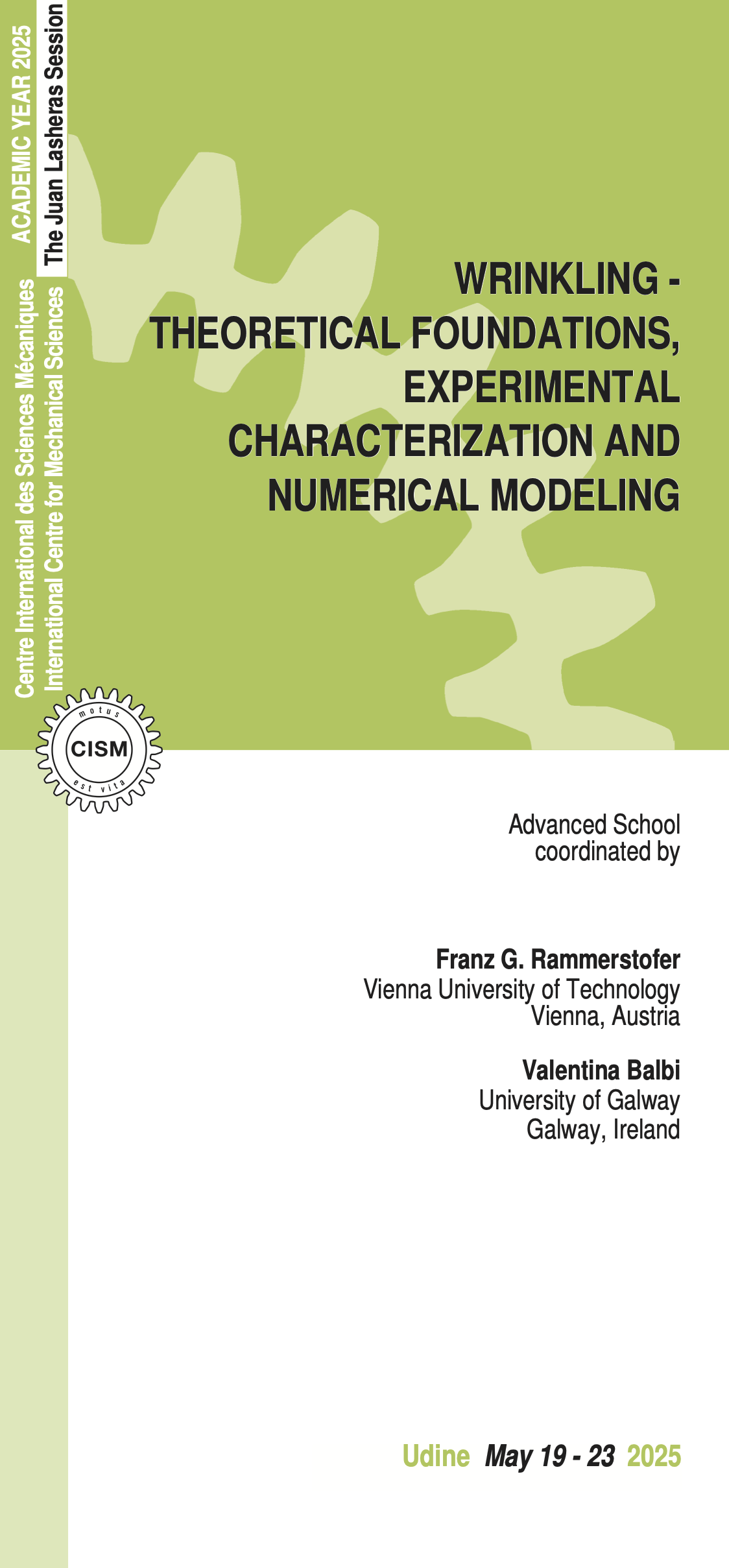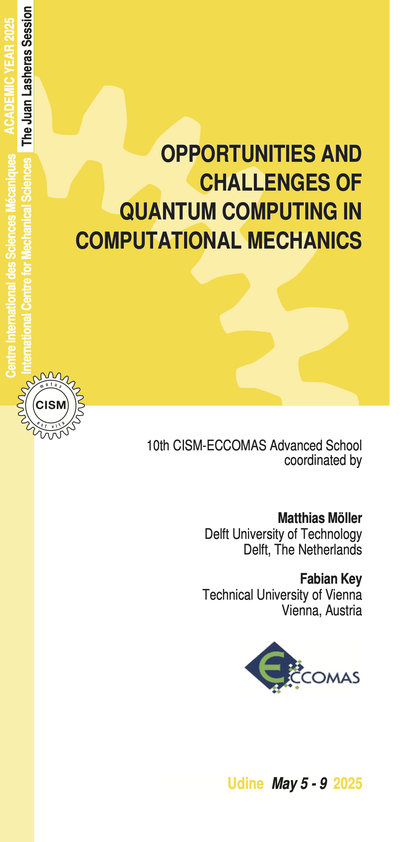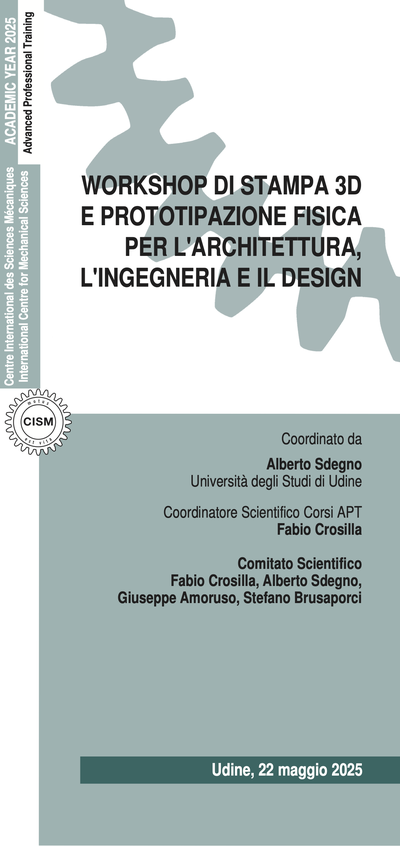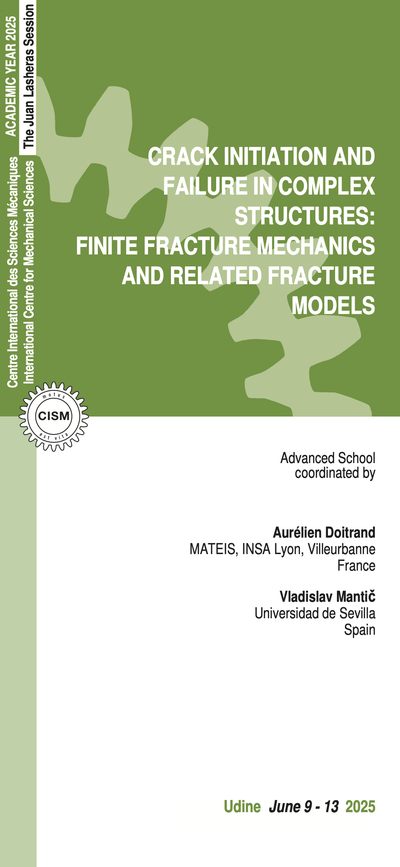This course is aimed at graduate students, PhD candidates, and postdoctoral researchers in electronics/biomedical/mechanical/civil engineering, materials science, biophysics and applied mathematics. It is also valuable for senior scientists and engineers in academia and industry interested in the fundamental theoretical aspects of wrinkling phenomena, their numerical simulation and experimental characterization.
Wrinkles appear almost everywhere in nature and during manufacturing or use of single- or multilayered thin structures. For instance, wrinkling is one of the major phenomena that control the morphogenesis of soft tissues (e.g. the brain) and the shape of plant leaves. In film-substrate systems, wrinkles can form due to mechanical loading, swelling of the thin layer or shrinking of the substrate. Wrinkling is the mechanism that renders desired or undesired surface patterns in stretchable electronic devices made of thin metallic films on polymeric substrates. Wrinkles are known to appear on the human skin, occurring naturally or as a result of a surgical procedure. In this context, the hierarchical structure of skin, its microstructure and material properties play a dominant role. Wrinkles can evolve into other patterns such as creases and folds, period-doubling/tripling and other secondary bifurcations as well as debonding between layers. Wrinkling (especially combined with delamination) is considered a typical failure mechanism in composites, flexible electronics, as well as in lightweight sandwich structures. Wrinkles must be avoided when draping during the production of doubly-curved textile-reinforced composites by proper lay-up formation and controlled mechanical and thermal loadings. Undesired wrinkles can also occur during metal forming, for example when rolling or straightening strips. Various wrinkling phenomena can be observed in thin plates and strips under tension or combined stretching and twisting. These few examples illustrate the wide variety of areas in which wrinkling plays an essential role.
Regardless of whether wrinkling appears in biological systems or in engineering structures, from a mechanical perspective, this phenomenon can be studied with a broad array of advanced methods. This course focuses on presenting state-of-the-art modelling techniques used to predict the development of wrinkling in a wide range of applications. The following analytical, semi-analytical and computational approaches will be discussed: tension field theory, eigenvalue analysis for discretised models, unit cell analysis, nonlinear computational analysis for studying growth/disappearance or transitions of wrinkles; theory of growth and remodelling coupled with nonlinear and incremental elasticity for studying soft tissue morphogenesis; exact linear and weakly nonlinear analyses under the framework of nonlinear elasticity as well as kinetic approaches, complementing each other, for studying wrinkling of thin films on substrates. Experimental studies and practical simulations of wrinkling defects during composite forming processes will complement the theoretical considerations. Practical work will be carried out the participants’ laptops, using open-source software.
Mane, S., & Huang, R. (2022). Rate-dependent wrinkling and subsequent bifurcations of an elastic thin film on a viscoelastic layer. International Journal of Solids and Structures, 257, 111592.
Landis, C. M., Huang, R., & Hutchinson, J. W. (2022). Formation of surface wrinkles and creases in constrained dielectric elastomers subject to electromechanical loading. Journal of the Mechanics and Physics of Solids, 167, 105023.
Fu, Y. B. (2001). Perturbation methods and nonlinear stability analysis. In Y. B. Fu & R. W. Ogden (Eds.), Nonlinear Elasticity: Theory and Applications (Chapter 10). Cambridge University Press.
Fu, Y. B., & Cai, Z. X. (2015). An asymptotic analysis of the period-doubling secondary bifurcation in a film/substrate bilayer. SIAM Journal on Applied Mathematics, 75, 2381-2395.
Limbert, G. (2017). Mathematical and computational modelling of skin biophysics: A review. Proceedings of the Royal Society A, 473, 320170257.
Guzman-Maldonado, E., Wang, P., Hamila, N., & Boisse, P. (2019). Experimental and numerical analysis of wrinkling during forming of multi-layered textile composites. Composite Structures, 208, 213-223.
Ciarletta, P., Balbi, V., & Kuhl, E. (2014). Pattern selection in growing tubular tissues. Physical Review Letters, 113(24), 248101.
Venkata, S. P., Balbi, V., Destrade, M., & Zurlo, G. (2024). Designing necks and wrinkles in inflated auxetic membranes. International Journal of Mechanical Sciences, 268, 109031.
Wang, T., Yang, Y., & Xu, F. (2022). Mechanics of tension-induced film wrinkling and restabilization: A review. Proceedings of the Royal Society A, 226327, 20220149.
6 lectures on:
Tension field theory, inflatable membranes; localised wrinkling and necking. Wrinkling and morphogenesis: theory of growth and remodelling; semi-analytical methods (Stroh formulation and Riccati equation); application to gastrointestinal and brain morphogenesis as well as blood vessel surgery.
6 lectures on:
Wrinkling in a film/substrate bilayer and surface instabilities: exact linear and weakly nonlinear analyses under the framework of nonlinear elasticity; categorisation of bifurcation/wrinkling behaviour; effect of a prestretch; period-doubling; Biot instability and formation of creases/folds.
7 lectures on:
Wrinkling during forming of textile-reinforced composites: unit cell analyses; simulation of draping – examination of the role of tensile, in-plane shear, and bending stiffness; hysteretic models; thermal history and strain rate effects.
Practical simulations, on the participants’ laptops using open-source software (by Dr. E. Guzman-Maldonado, Innovamics, Lyon, France).
6 lectures on:
Wrinkling and Creasing of elastic thin films on viscoelastic substrates and constrained dielectric elastomers - a kinetic approach: wrinkle patterns; wrinkling-induced delamination; rate-dependent wrinkling and subsequent bifurcations; wrinkles and creases in hydrogel layers; engineering applications, e.g., flexible electronics.
6 lectures on:
Skin biomechanics and computational simulations of skin wrinkles: the hierarchical structure of the skin (microstructural and material properties); skin wrinkles and mechanobiology; constitutive modelling; finite element procedures for skin wrinkle simulation.
5 lectures on:
Introduction; shear web and tension field theories; wrinkles in stretched thin elastic structures - fundamentally different causes; mode jumping; wrinkling in thin-strip rolling; face layer wrinkling in sandwich structures; small experiments carried out during the lectures.





